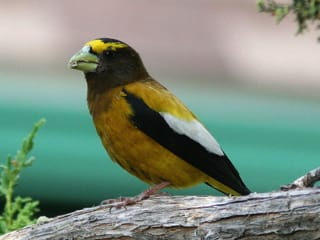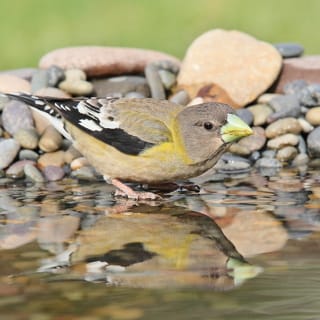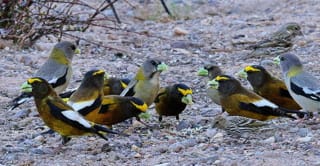Initially this guide displays common birds of all types that are flying right now in our area. Use the selectors below to view rare birds, view birds flying any time, restrict the output to a certain shape of bird, or search by name.
New Mexico is on the western edge of the Central Flyway which is one of the major migration pathways between north and south for birds traveling between breeding and wintering grounds along the Rocky Mountains. This has resulted in the state having an incredible diversity of birds with over 550 different species reported. A little more than half of this number are sighted annually on the Pajarito Plateau. Some of these birds are full-time residents, some migrate here for a few weeks or months, and other are only seen briefly as they pass through the region.
This guide features many of the birds known to frequent Los Alamos county by when they are likely to be seen in the area. You can get additional information on local birds by joining PEEC Birders or going to the eBird website. eBird also includes lists of rare bird sightings and birding hot spots.
Bird References
Birdweb
Cornell Lab of Ornithology
eBird
eNature
Institute for Bird Populations
National Audubon Society
New Mexico Ornithology Society
What Bird
xeno-canto
Subject Area Experts (all guides)
Steve Cary (butterflies)
Beth Cortright (insects)
Terry Foxx (invasive plants)
Leslie Hansen (mammals)
Richard Hansen (fish, mammals)
Dorothy Hoard (butterflies, trees)
Chick Keller (flowers, herbarium)
Shari Kelley (geology)
Kirt Kempter (geology)
Garth Tietjen (reptiles)
David Yeamans (birds)
Web Development and Content Management
Pat Bacha
Jennifer Macke
Graham Mark
Akkana Peck
Contact
Please contact us for local nature questions and sightings. We welcome comments, corrections, and additions to our guides.
For more information about local nature, please visit our Nature Blog or subscribe to PEEC This Week.
Make Selection
 Photo: male by Hari Viswanathan  Photo: female by Bob Walker  Photo: mixed flock by bob Walker |  Evening GrosbeakEVGR (Coccothraustes vespertina, Hesperiphona vespertina)Family: Fringillidae (Cardinals, Grosbecks, and Allies) Size: 7.5 - 8.5 in (19 - 22 cm) Flies: Jan 01 - Dec 31 Morphology: heavyset birds with thick, conical bills; males are yellow and black and have a white patch on the wings, dark heads, bright-yellow stripe over eye, and pale ivory to greenish bill; females are primarily gray and have black and white wings, a greenish tinge to neck and flanks, and a greenish-yellow bill; immatures like females Status: native; locally common Food source: mostly seeds, some berries, buds and sap, occasional insects Habitat: coniferous forests, deciduous woodlands, suburban areas The Evening Grosbeak is a western bird that has expanded its range as far east as New England. Locally, they may be common one year and uncommon the next. These birds are very fond of sunflower seeds which they can easily crack with their large bills. Flocks will readily visit bird feeders to consume large amount of the seeds. They have been observed to eat almost 100 sunflower seeds in five minutes. Evening Grosbeaks will also consume a surprising quantity of raw salt. During mating season, the birds leave the flock to pair up. Males will perform a courtship dance. The nest, built by the female, consists of a loosely made cup of twigs and is usually located on branch well out from the trunk. Info Photos Distribution Frequency |
